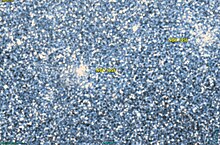
NGC 1903 is a star cluster in the Large Magellanic Cloud in the constellation Dorado. It was discovered in 1834 by John Herschel with an 18.7-inch reflecting telescope.

NGC 361 is an open cluster in the Small Magellanic Cloud. It is located in the constellation Tucana. It was discovered on September 6, 1826, by James Dunlop. It was described by Dreyer as "very very faint, pretty large, very little extended, very gradually brighter middle." At an aperture of 31.0 arcseconds, its apparent V-band magnitude is 12.24, but at this wavelength, it has 0.40 magnitudes of interstellar extinction.

NGC 1869 is an open cluster in the Dorado constellation. It is located within the Large Magellanic Cloud. It was discovered by James Dunlop on September 24, 1826, using a telescope reflector with a nine-inch aperture. It is a large cluster of rich scattered stars. It is part of a triple association with NGC 1871 and NGC 1873. It has an apparent magnitude of 14.0.

NGC 2032 is an emission nebula in the Dorado constellation and near the supershell LMC-4 and it consists of NGC 2029, NGC 2035 and NGC 2040. It was first discovered by James Dunlop on 27 September 1826, and John Herschel rerecorded it on 2 November 1834. NGC 2032 is located in the Large Magellanic Cloud.

NGC 1936 is an emission nebula which is part of the larger LMC-N44 nebula located in the Dorado constellation in the Large Magellanic Cloud. It was discovered by John Herschel in 1834 and added to the Catalogue of Nebulae and Clusters of Stars as NGC 1936. It was later observed by John Dunlop on September 27, 1936, and Williamina Fleming in 1901 and added to the Index Catalogue as IC 2127. Its apparent magnitude is 11.60.

NGC 1929 is an open cluster associated with the emission nebula located within the N44 nebula in the Dorado constellation and part of the Large Magellanic Cloud. It was discovered by James Dunlop on August 3, 1826. Its apparent magnitude is 14.0, and its size is 0.8 arc minutes.

NGC 1934 is an emission nebula located in the Dorado constellation and part of the Large Magellanic Cloud. It was discovered by John Herschel on November 23, 1834. Its apparent magnitude is 10.50.

NGC 1935 is an emission nebula which is part of the larger LMC-N44 nebula in the Dorado constellation. NGC 1935 is also located in the Large Magellanic Cloud. It was discovered by John Herschel in 1834 and added to the Catalogue of Nebulae and Clusters of Stars as NGC 1935, then was observed by Williamina Fleming in 1901 and later added to the Index Catalogue as IC 2126.
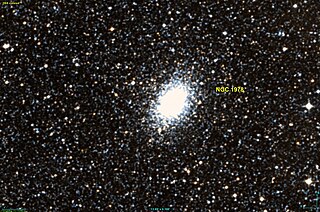
NGC 1978 is an elliptical shaped globular cluster or open cluster in the constellation Dorado. It is located within the Large Magellanic Cloud. It was discovered by James Dunlop on November 6, 1826. At an aperture of 50 arcseconds, its apparent V-band magnitude is 10.20, but at this wavelength, it has 0.16 magnitudes of interstellar extinction. It appears 3.9 arcminutes wide. NGC 1978 has a radial velocity of 293.1 ± 0.9 km/s.

NGC 2002 is an open cluster located in the Dorado constellation and is part of the Large Magellanic Cloud. It was discovered by James Dunlop on September 24, 1826. Its apparent magnitude is 10.1, and its size is 2.0 arc minutes.

NGC 1987 is an open cluster or a globular cluster located in the Mensa constellation and part of the Large Magellanic Cloud. It was discovered by John Herschel on November 3, 1834. Its apparent magnitude is 12.1, and its size is 1.7 arc minutes. It is thought to be around 600 million years old and has a significant number of red ageing stars.

NGC 1955 is an open cluster associated with an emission nebula located in the Dorado constellation. This nebula is part of the H II region which is part of the Large Magellanic Cloud and was discovered by James Dunlop on August 3, 1826. Its apparent magnitude is 9.0, and its size is 1.8 arc minutes.

NGC 1971 is an open cluster which is in the Dorado constellation and is part of the Large Magellanic Cloud. It was discovered by John Herschel on December 23, 1834. Its apparent size is 11.9 by 0.80 arc minutes.
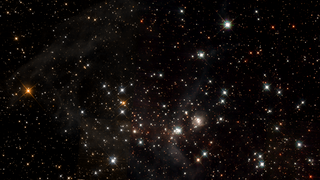
NGC 1974 is an open cluster associated with an emission nebula which is located in the Dorado constellation which is part of the Large Magellanic Cloud. It was discovered by James Dunlop on November 6, 1826, and later observed by John Herschel on January 2, 1837, subsequently cataloged as NGC 1991. Its apparent magnitude is 9.0 and its size is 1.7 arc minutes.
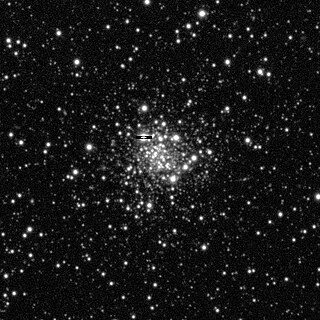
NGC 1997 is an open cluster located in the Dorado constellation which is part of the Large Magellanic Cloud. It was discovered by John Herschel on November 30, 1834. Its apparent magnitude is 13.43 and its size is 1.80 arc minutes.
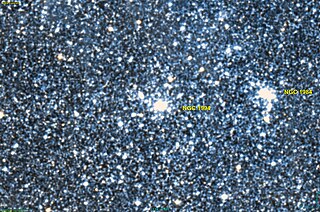
NGC 1994 is an open cluster in the Dorado constellation which is located in the Large Magellanic Cloud. It was discovered by John Herschel on 16 December 1835. It has an apparent magnitude of 9.8 and its size is 0.60 arc minutes.
NGC 1986 is an open cluster which is located in the Mensa constellation which is part of the Large Magellanic Cloud. It was discovered by James Dunlop on September 27, 1826. It has an apparent magnitude of 11.31 and its size is 2.80 by 2.40 arc minutes.

NGC 1983 is an open cluster associated with an emission nebula which is located in the Dorado constellation and part of the Large Magellanic Cloud. It was discovered by John Herschel on 11 November 1836. It has an apparent magnitude of 9.9 and its size is 1.0 arc minutes.
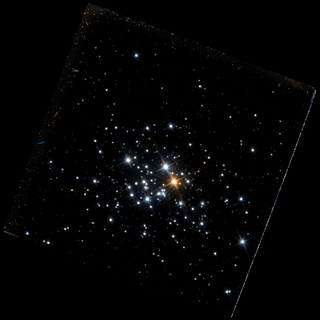
NGC 1984 is an open cluster associated with an emission nebula, it is located in the constellation Dorado in the Large Magellanic Cloud. It was discovered by John Herschel on 16 December 1835. The apparent magnitude is 9.9 and its size is 1.50 by 1.20 arc minutes.

NGC 643 is an open cluster located on the far outskirts of the Small Magellanic Cloud in the southern constellation of Hydrus, approximately 200,000 light-years from Earth. Due to their close proximity to NGC 643, the open cluster ESO 29-SC44 and the galaxies PGC 6117 and PGC 6256 are also designated NGC 643A, NGC 643B and NGC 643C, respectively. NGC 643 is relatively old. Its brightest stars have an apparent magnitude of 19.
